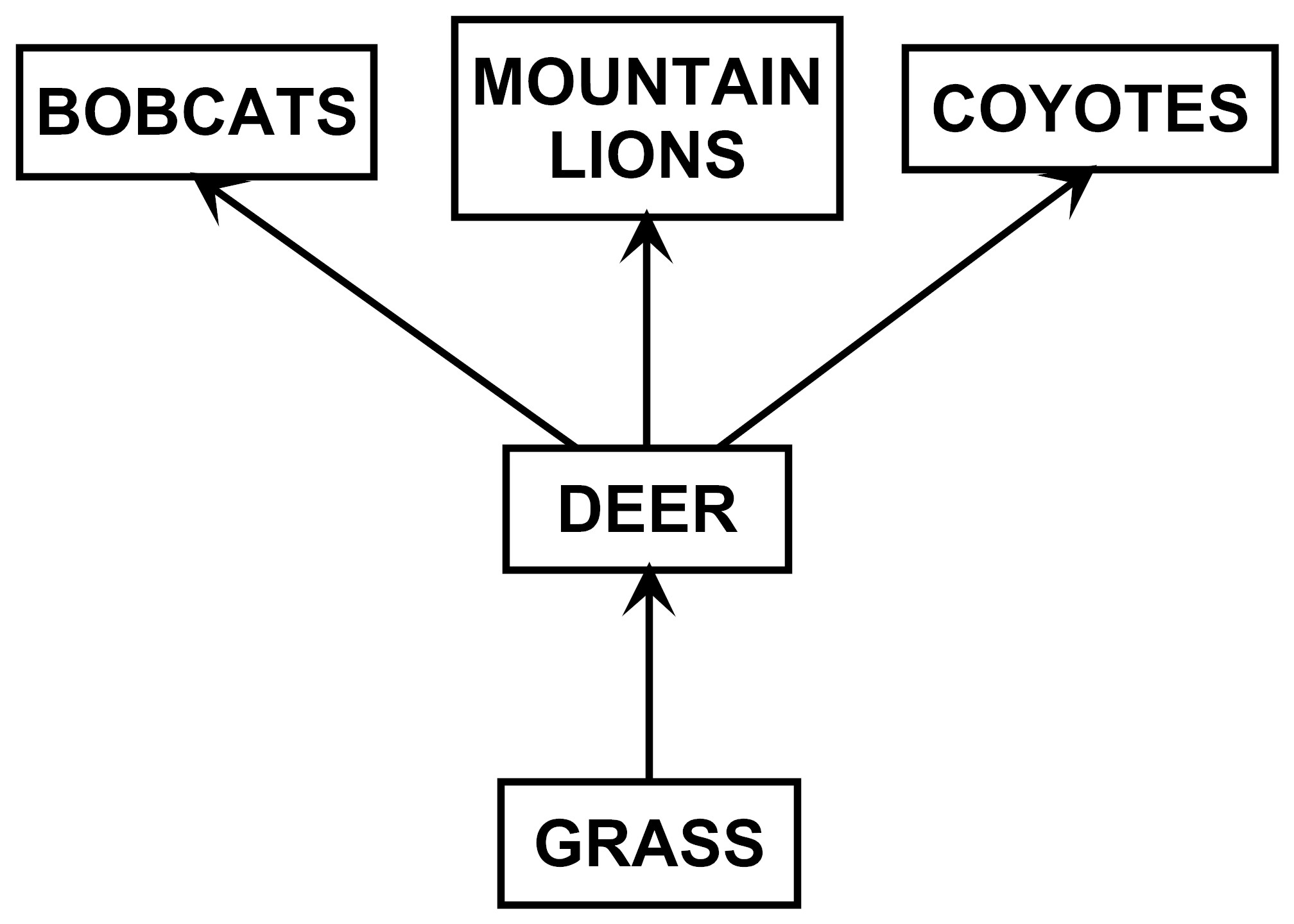Item ID042006: The size of a population of organisms can increase when its predators are removed from an area because the organisms live longer and have more offspring that also live longer (includes a food web diagram).
In 1893, a large area of a national forest was home to mountain lions, coyotes, and bobcats as well as about 3,000 deer.
The deer ate grass, and the mountain lions, coyotes, and bobcats ate deer.
Around 1900, hunters began killing large numbers of mountain lions, coyotes, and bobcats. By 1923, there were 100,000 deer in this population.

Using only the relationships between the plants and animals described above, which of the following statements could explain why the population of deer increased so much?
- The number of deer increased because without predators, the deer lived longer and had more offspring that also lived longer.
- The number of deer increased because populations are always increasing.
- The number of deer increased because with fewer mountain lions, coyotes, and bobcats, the deer had more food to eat.
- There is not enough information to tell why the deer population increased.
- Distribution of Responses

- Students Responding Correctly
| Group | Correct | Total | Percent |
|---|---|---|---|
| Overall | 955 | 1372 | 70% |
| Grades | |||
| 6–8 | 507 | 761 | 67% |
| 9–12 | 446 | 608 | 73% |
| Gender | |||
| Male | 489 | 682 | 72% |
| Female | 445 | 665 | 67% |
| Primary Language | |||
| English | 900 | 1278 | 70% |
| Other | 38 | 69 | 55% |
- Disciplinary Core Ideas
- LS2.A Organisms, and populations of organisms, are dependent on their environmental interactions both with other living things and with nonliving factors.
- NRC Framework
- Practice 6: Constructing Explanations and Designing Solutions: ...evaluate…explanations for consistency with the evidence.

